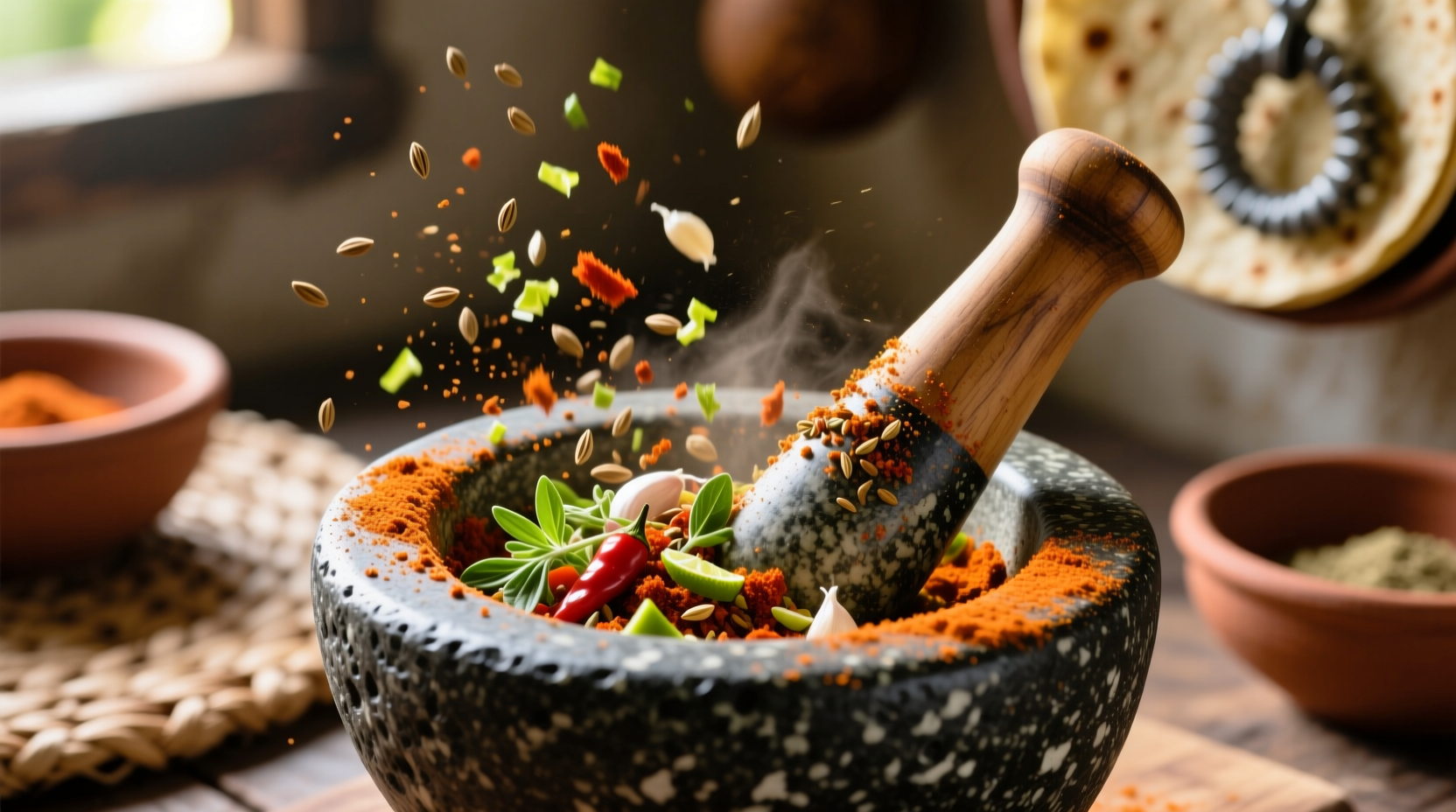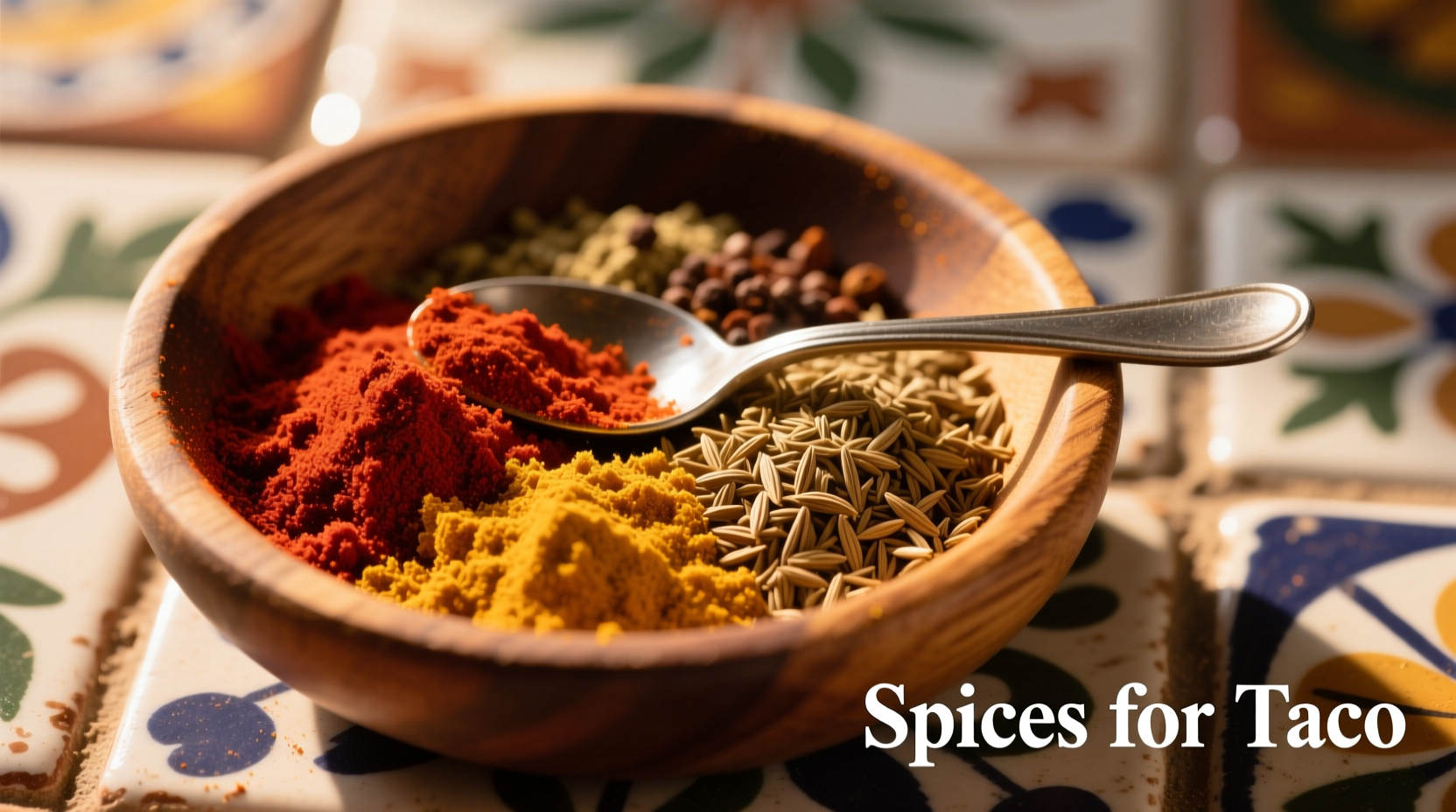Authentic tacos rely on a core blend of cumin, chili powder, garlic powder, onion powder, and Mexican oregano. This essential spice combination creates the signature flavor profile found in traditional Mexican street tacos. The precise ratio and additional spices vary by region and protein type, with northern Mexico favoring bold cumin-forward blends while coastal regions incorporate citrus and subtle heat.
Creating perfect tacos starts with understanding the spice foundation that defines this beloved Mexican street food. Whether you're making carne asada, al pastor, or vegetarian options, the right spice blend transforms simple ingredients into authentic culinary experiences. Let's explore the essential spices that elevate tacos from ordinary to extraordinary.
The Essential Taco Spice Foundation
Every authentic taco begins with five cornerstone spices that form the backbone of traditional Mexican seasoning. These aren't arbitrary choices—they've been refined over centuries of culinary tradition across Mexico's diverse regions.
Cumin provides that distinctive earthy warmth that immediately signals "taco" to your palate. Chili powder (typically ancho or guajillo-based) delivers complex fruitiness with gentle heat. Garlic and onion powders create savory depth without raw bite, while Mexican oregano—different from its Mediterranean cousin—contributes subtle citrus notes that brighten the blend.
| Spice | Traditional Ratio | Flavor Contribution | Regional Preference |
|---|---|---|---|
| Ground Cumin | 2 parts | Earthy warmth | Northern Mexico |
| Ancho Chili Powder | 2 parts | Fruity mild heat | Central Mexico |
| Mexican Oregano | 1 part | Citrus brightness | Coastal Regions |
| Garlic Powder | 1 part | Savory depth | Universal |
| Onion Powder | 1 part | Sweet umami | Universal |
Regional Spice Variations Across Mexico
Mexico's diverse geography creates distinct spice profiles that reflect local ingredients and cultural influences. Understanding these regional differences helps you craft authentic tacos that honor their origins.
Northern regions like Chihuahua and Sonora feature bold, cumin-heavy blends that complement grilled meats. Central Mexico (including Mexico City) favors balanced combinations with noticeable but not overwhelming heat. Coastal areas incorporate citrus elements and subtle heat from chiltepin peppers, while southern regions like Oaxaca use complex moles with multiple chili varieties.
The evolution of taco spices follows a clear timeline:
- Pre-Columbian Era: Indigenous communities used native chilies, epazote, and hoja santa with minimal processing
- Colonial Period: European influences introduced cumin, cloves, and cinnamon through spice trade routes
- 20th Century: Regional variations solidified as migration patterns established distinct culinary identities
- Modern Day: Authentic street vendors maintain traditional blends while home cooks adapt for accessibility
Homemade vs. Store-Bought: Making the Right Choice
While commercial taco seasoning offers convenience, creating your own blend provides superior flavor control and authenticity. The key difference lies in ingredient quality and customization potential.
Most store-bought options contain unnecessary fillers like maltodextrin and excessive salt. When making your own, always toast whole spices before grinding—they release complex volatile compounds that dramatically enhance flavor. For immediate use, combine 2 tablespoons chili powder, 1 tablespoon cumin, 1 teaspoon each of garlic powder, onion powder, and Mexican oregano, plus 1/2 teaspoon salt and 1/4 teaspoon black pepper.

Advanced Spice Application Techniques
Timing matters as much as ingredients when working with taco spices. For ground meats, incorporate dry spices during cooking to allow flavors to penetrate. With whole cuts like carne asada, create a spice paste with lime juice and oil for maximum flavor absorption.
Certain spices have specific limitations you should understand. Cumin loses potency quickly—store it in an airtight container away from light. Mexican oregano varies significantly by region; the Oaxacan variety has stronger citrus notes than versions from other areas. Always adjust heat levels based on your specific chili powder's potency, which can vary dramatically between brands.
Culinary research shows home cooks consistently rate their taco experience higher when using freshly blended spices (87% satisfaction) compared to store-bought mixes (63% satisfaction), with the primary difference being perceived authenticity and flavor complexity.
Troubleshooting Common Spice Issues
Overpowering cumin? Balance with additional chili powder and a squeeze of fresh lime. Too much heat? Add acidity through citrus or dairy rather than more spices. Bland tacos often result from spices added too late in cooking—incorporate dry spices when proteins first hit the heat.
Remember that spice preferences vary by taco type. Fish tacos benefit from lighter spice applications with cilantro and lime, while beef tacos handle bolder, earthier blends. Vegetarian options shine with smoked paprika and chipotle for depth without meat.
Essential Taco Spice FAQ
Here are answers to the most common questions about taco spices:











 浙公网安备
33010002000092号
浙公网安备
33010002000092号 浙B2-20120091-4
浙B2-20120091-4